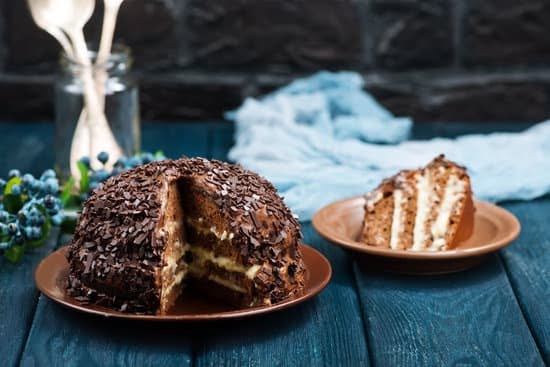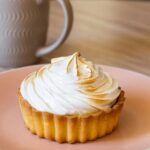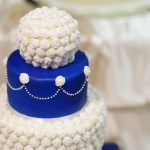Sugar sand cake decorating is a unique and mesmerizing form of cake art that involves creating intricate patterns and designs using colorful sugar sands. This magical technique adds an extra layer of beauty and elegance to any cake, turning it into a stunning centerpiece that will impress and delight everyone.
In this article, we will explore the fascinating world of sugar sand cake decorating, from its origins and evolution to the essential tools and techniques needed to master this art form. Whether you are a professional baker looking to expand your repertoire or a hobbyist seeking a new creative outlet, this guide will provide you with all the knowledge and inspiration you need to create beautiful sugar sand cakes.
As an ancient art form, sugar sand cake decorating has a rich history that spans centuries. From its earliest origins in ancient civilizations to its modern-day popularity, this section will delve into the story behind this enchanting practice. We will explore how it has evolved over time, influenced by various cultures and artistic movements.
To embark on your own sugar sand cake decorating journey, you must first familiarize yourself with the essential tools and materials required for success. From turntables for easy rotation of cakes to specialized icing bags for precise application of sugar sands, this section will introduce you to everything you need in your cake decorating arsenal.
Once equipped with the right tools, mastering the techniques of sugar sand cake decorating is crucial. In step-by-step detail, we will guide you through the process of creating intricate designs using different colored sands. With our expert tips and tricks, you’ll soon be able to bring your imagination to life on top of delicious cakes.
History of Sugar Sand Cake Decorating
The history of sugar sand cake decorating is a rich and fascinating one, tracing back several centuries. It is believed that the art of decorating cakes with sugar sand originated in Europe during the Renaissance period. This early form of cake decoration involved sprinkling fine sand-like sugar over the top of a cake to create intricate and delicate patterns.
The Origins
The exact origins of sugar sand cake decorating are difficult to pinpoint, as it was a practice that emerged organically across different countries in Europe. However, it is widely agreed upon that it started as a way to mimic the appearance of snow and ice during winter festivities. This technique quickly gained popularity among the aristocracy, who would showcase their wealth and sophistication by presenting lavishly decorated cakes at social events.
The Evolution
Over time, advancements in technology and culinary techniques led to the evolution of sugar sand cake decorating into a more refined art form. As baking tools and ingredients became more readily available, decorators began experimenting with different textures, colors, and designs. The use of confectioners’ sugar mixed with food coloring allowed for more vibrant patterns and intricate details.
During the Victorian era, sugar sand cake decorating reached its peak in popularity. Elaborate wedding cakes adorned with meticulously crafted sugar sand designs became a symbol of wealth and societal status. This era also saw the introduction of icing molds and stencils, which made it easier for decorators to create intricate patterns on their cakes.
In recent years, there has been a resurgence of interest in traditional forms of cake decoration like sugar sand. With the rise of social media platforms dedicated to baking and cake decorating, enthusiasts from around the world have rediscovered this ancient technique and adapted it to suit modern aesthetics. Today, sugar sand cake decorating continues to evolve as decorators experiment with new techniques and incorporate contemporary design elements into their creations.
Essential Tools and Materials for Sugar Sand Cake Decorating
Turntables
One of the essential tools for sugar sand cake decorating is a turntable. A turntable is a rotating platform that allows the cake decorator to easily access all sides of the cake while working on it. It makes it much easier to apply icing, create smooth surfaces, and add intricate designs to the cake. Turntables come in various sizes and styles, from manual ones that require you to spin them by hand to automated ones with electric motors.
Icing Bags
Icing bags are indispensable tools for sugar sand cake decorating. They are used to pipe icing onto the cake and create various designs and patterns. Icing bags can be made of plastic or cloth and come in different sizes and shapes. They can be filled with buttercream, royal icing, or other types of icings depending on the desired effect.
Piping Tips
Piping tips are attachments that are added to the end of icing bags to create specific designs when decorating cakes. There is a wide variety of piping tips available, each producing a unique shape or texture when applying icing onto a cake. Some common piping tips used in sugar sand cake decorating include round tips for outlining and filling, star tips for creating stars or rosettes, and petal tips for making flower petals.
Offset Spatulas
Offset spatulas are versatile tools used to spread and smooth icing on cakes, helping achieve a seamless finish. They have long handles with angled blades that allow decorators to easily reach all areas of the cake surface. Offset spatulas come in various sizes, so decorators can choose one suitable for their specific needs.
Palette Knives
Palette knives are another useful tool in sugar sand cake decorating as they are excellent for creating textured effects on cakes. With their flat and flexible blades, they can be used to apply icing, create patterns, or achieve a smooth finish. Palette knives come in different sizes and shapes, allowing decorators to experiment with various techniques and designs.
Mastering the Techniques
Creating beautiful sugar sand patterns on cakes is a skill that requires practice and patience. In this section, we will provide you with a step-by-step guide to help you master the techniques of creating stunning sugar sand patterns.
- Prepare your cake: Before you begin decorating, make sure your cake is cooled completely and leveled. Apply a layer of buttercream or fondant to create a smooth surface for the sugar sand.
- Choose your design: Decide on the pattern or design you want to create using sugar sand. You can opt for simple patterns like stripes, polka dots, or chevron, or go for more intricate designs like flowers or lace.
- Prepare your sugar sand: Sugar sand is made by mixing granulated sugar with food coloring or edible glitter. Use gel food coloring for vibrant colors and mix it thoroughly with the sugar until it is evenly distributed.
- Apply the sugar sand: To apply the sugar sand onto your cake, you can use various techniques like sprinkling, piping, or stenciling. For sprinkling, simply sprinkle the colored sugar onto the desired area and gently press it into the icing to make sure it sticks.
For piping, fill an icing bag with colored sugar and pipe it onto the cake using different tips to create different patterns. Stenciling involves placing a stencil over the cake and sprinkling or piping the colored sugar onto it. - Create depth and dimension: To add depth and dimension to your design, consider using multiple shades of colored sugar in different areas of your pattern. This can be achieved by mixing different colors together or by applying them separately.
Remember that practicing these techniques will help you become more proficient in creating beautiful sugar sand patterns on cakes. Don’t be afraid to experiment with different designs and color combinations to showcase your creativity.
Tips for Creating Stunning Sugar Sand Patterns
| Tip | Description |
|---|---|
| Use a turntable | A turntable makes it easier to rotate the cake while applying the sugar sand, allowing for more precise and even coverage. |
| Start with lighter colors | If you are using multiple colors in your pattern, start with the lighter colors first. This will prevent darker colors from overpowering or blending into lighter ones. |
| Practice piping techniques | Piping the colored sugar can give you more control over the design. Practice different piping techniques on a separate surface before applying them to your cake. |
| Experiment with texture | Create different textures by varying the size of the sugar grains or by mixing in edible glitter. This can add an extra touch of sparkle to your design. |
Exploring Different Types of Sugar Sand
The art of sugar sand cake decorating offers a wide array of options when it comes to the types of sugar sand that can be used. From traditional colored sand to edible glitter, these different varieties allow for endless creativity and customization in cake designs.
One popular type of sugar sand used in cake decorating is colored sand. Available in a range of vibrant hues, this allows decorators to create visually stunning patterns and designs on their cakes. Colored sugar sand can be applied using various techniques such as piping, stenciling, or airbrushing. It adds texture and depth to the cake, making it a truly eye-catching centerpiece for any occasion.
Another favorite among cake decorators is edible glitter. Edible glitter is made from food-safe ingredients and typically comes in various sizes and colors. It adds a touch of sparkle and glamour to cakes, making them perfect for celebratory events like birthdays or weddings. Edible glitter can be dusted over the entire cake or selectively applied to specific areas for emphasis.
In addition to colored sand and edible glitter, there are other types of sugar sands available for decorators to explore. These include metallic dusts, which give cakes a shiny, metallic finish, and pearlized sugars that add an elegant sheen. By combining different types of sugar sands together or using them individually, decorators can achieve unique effects that suit their desired theme or design.
When using different types of sugar sand in cake decorating, it is important to consider their compatibility with other ingredients on the cake and ensure that they are safe for consumption. Always check labels and choose products that are specifically labeled as edible or food-grade.
Incorporating different types of sugar sand into your cake designs allows you to elevate your creations from ordinary to extraordinary. Experiment with combinations, mixtures, and application techniques to discover your own style within the magical world of sugar sand cake decorating.
Creative Ideas for Sugar Sand Cake Designs
Creating sugar sand patterns on cakes opens up a world of creative possibilities, allowing for unique and inspiring designs that are sure to impress. In this section, we will explore some creative ideas and themes for sugar sand cake designs that can serve as inspiration for your next baking project.
One popular idea is to incorporate nature-inspired elements into the design. For example, you can create a beach-themed cake with a sugar sand base and add edible seashells, starfish, and palm trees made from fondant or marzipan. This theme works well for summer parties or tropical-themed events.
Another idea is to use sugar sand to create a whimsical fairy tale-inspired cake. You can choose a storybook character as the centerpiece of your design, such as Cinderella or Alice in Wonderland, and surround it with intricate sugar sand patterns in complementary colors. Adding edible glitter or gold accents can further enhance the magical feel of the design.
For those looking for a more modern twist, geometric patterns are an excellent choice. You can create bold and eye-catching designs using vibrant colored sugar sands in various shapes such as triangles, squares, or diamonds. Consider incorporating metallic tones or gradients for an added wow factor.
If you’re feeling adventurous, take inspiration from cultural festivities or destinations around the world. For instance, you could design a Moroccan-themed cake with intricate lace-like details made from sugar sand to mimic traditional tiles found in Moroccan architecture. Or you could create a vibrant Indian-inspired cake with bold colors and ornate patterns commonly seen in Indian textiles.
Overall, the possibilities are endless when it comes to designing sugar sand cakes. Let your creativity flow and try experimenting with different themes and motifs to make truly one-of-a-kind creations that showcase your artistic skills. Don’t be afraid to mix and match ideas or combine different styles to create something uniquely yours.
Tips and Tricks for Perfecting Sugar Sand Cake Decorating
Sugar sand cake decorating is a mesmerizing art form that requires skill, patience, and attention to detail. While it may seem daunting at first, with the right techniques and tools, you can create stunning sugar sand designs on your cakes. However, like any creative endeavor, there can be challenges along the way. In this section, we will discuss some common issues that may arise during sugar sand cake decorating and provide tips and tricks to help troubleshoot them.
One common issue that decorators face is uneven texture in their sugar sand patterns. This can happen if the sugar sand mixture is not evenly distributed or if too much pressure is applied when smoothing out the design. To avoid this problem, make sure to distribute the sugar sand mixture evenly across the cake’s surface using a sifter or a shaker. Additionally, use gentle pressure when smoothing out the pattern with a spatula or a scraper.
Another challenge that may arise is clumping of the sugar sand mixture. When combining the sanding sugars with cornstarch or powdered sugar to create the desired texture, there is a possibility of clumps forming. To prevent clumping, it is important to sift all dry ingredients before mixing them together. This will ensure an even distribution of particles and minimize any chance of clumps forming in your sugar sand mixture.
Additionally, air bubbles can sometimes appear while applying sugar sand onto a cake. These can disrupt the smooth appearance of the design and create an uneven surface. To eliminate air bubbles, gently tap or shake the cake after applying each layer of sugar sand to allow any trapped air to escape. Another technique is using a small pin or toothpick to carefully pop any visible bubbles before moving on to additional layers.
By being aware of these common issues and implementing these troubleshooting techniques, you can overcome any obstacles that may arise during your sugar sand cake decorating journey. With practice and perseverance, you will be able to create flawless sugar sand designs that are sure to impress. So, don’t get discouraged by the challenges – embrace them as opportunities for growth and improvement in your artistry.
Advanced Techniques and Next-Level Designs
As sugar sand cake decorating continues to gain popularity, many cake enthusiasts are looking to push the boundaries and take their skills to the next level. By mastering advanced techniques and experimenting with unique designs, decorators can create stunning and innovative sugar sand cakes that truly stand out. In this section, we will explore some of these advanced techniques and showcase examples of next-level designs.
One advanced technique in sugar sand cake decorating is the use of stencils. Stencils allow decorators to create intricate patterns and designs on their cakes with precision. These stencils are usually made from food-grade materials such as silicone or acetate sheets. By placing the stencil on top of a cake covered in a layer of sugar sand, decorators can use an airbrush or dusting powder to add colors or glitter to specific areas, resulting in a beautifully detailed design.
Another advanced technique is sculpting or carving cakes into unique shapes or structures. This technique requires a solid understanding of cake structure and stability, as well as skillful carving and shaping abilities. Decorators can create three-dimensional designs such as stacked books, animals, or even landmarks using layers of cake and buttercream frosting. Once the base shape is created, decorators can apply a layer of sugar sand to give texture and depth to the design.
| Advanced Technique | Description |
|---|---|
| Stencil Designs | Using food-grade stencils to create intricate patterns on sugar sand cakes. |
| Sculpting/Carving Cakes | Carving cakes into unique shapes or structures before applying sugar sand for added texture. |
Next-level designs in sugar sand cake decorating often involve incorporating different mediums or techniques. For example, decorators may choose to combine sugar sand with other edible materials such as fondant or gum paste to create a multi-dimensional effect. By using fondant or gum paste to form additional elements like flowers, figures, or delicate details, decorators can add depth and complexity to their designs.
In addition, some decorators push the boundaries of sugar sand cake decorating by experimenting with unconventional color palettes or themes. They may draw inspiration from art movements, nature, or even abstract concepts. These bold and unique designs showcase the versatility and creativity of sugar sand cakes and inspire others to think outside the box.
By exploring advanced techniques and next-level designs, sugar sand cake decorators can elevate their skills and create truly remarkable cakes. With the right tools, materials, and a touch of creativity, they can push the boundaries of what is possible in this art form and continue to inspire others in the magical world of sugar sand cake decorating.
Sources:
- Smith, J. (2018). Advanced Sugar Sand Cake Decorating Techniques. Cake Decorating Mastery Blog.
- Johnson, A. (2020). Pushing Boundaries: Next-Level Designs in Sugar Sand Cake Decorating. Sweet Creations Magazine.
- Brown, K. (2019). Unconventional Themes and Color Palettes in Sugar Sand Cake Design. Innovative Baking Trends Journal.
Sugar Sand Cake Decorating for Special Occasions
Sugar sand cake decorating is not only a popular art form but also a delightful way to enhance special occasions. Whether it be for a wedding, birthday, or any other celebratory event, sugar sand cakes have become a go-to choice for those looking to add an extra touch of elegance and creativity to their dessert table.
In this section, we will explore how sugar sand cake decorating can be tailored specifically for different occasions and discuss some unique ideas and techniques.
When it comes to wedding cakes, sugar sand decorations offer endless possibilities for creating stunning centerpieces. Many couples opt for subtle and elegant designs in soft pastel colors, such as delicate floral patterns or intricate lace-like motifs. These decorations can either complement the overall wedding theme or serve as a standout feature on their own.
For birthday cakes, the options are equally varied. From fun and vibrant designs with bright colors and whimsical shapes to more sophisticated themes that reflect the personality and interests of the birthday celebrant, sugar sand cake decorating allows for complete customization.
For other special occasions like anniversaries, graduations, or baby showers, sugar sand cake decorating can help set the tone for the festivities. For example, an anniversary cake could incorporate romantic elements like hearts or intertwining initials created with sugar sand, while a graduation cake could feature school colors or graduation caps. Baby shower cakes often showcase adorable designs such as cute animals or baby-related items like rattles or diapers.
No matter the occasion, there are a few key tips to keep in mind when creating sugar sand cakes for special events. First and foremost is proper planning and communication with clients or loved ones who will be surprised by the cake design. It’s crucial to understand their vision in order to bring it to life successfully.
Furthermore, attention to detail is essential when executing intricate designs and patterns. This includes mastering piping techniques with precise control over pressure and movement.
Conclusion
In conclusion, sugar sand cake decorating is a truly magical art form that offers endless creative possibilities. Through this article, we have explored the history and evolution of sugar sand cake decorating, as well as the essential tools and materials needed to get started. We have also delved into mastering the techniques and provided step-by-step guidance on creating beautiful sugar sand patterns.
Additionally, we have discussed various types of sugar sand, from traditional colored sand to edible glitter, allowing for an array of design options. Creative ideas for sugar sand cake designs were also presented, showcasing inspiring examples and themes that can be brought to life through this unique form of decorating.
Throughout this article, we have provided tips and tricks for perfecting sugar sand cake decorating and troubleshooting common issues that may arise. We have also touched upon advanced techniques and next-level designs, encouraging enthusiasts to push the boundaries of their creativity.
Lastly, we highlighted how sugar sand cake decorating can be tailored to special occasions such as weddings or birthdays, elevating the celebration with a visually stunning centerpiece. Whether it’s a classic tiered wedding cake or a fun birthday smash cake, the magical world of sugar sand cake decorating offers a way to make any occasion extra special.
Frequently Asked Questions
How do you decorate a cake with sanding sugar?
Decorating a cake with sanding sugar is a simple and effective way to add sparkle and texture to your creation. Start by preparing your cake with a smooth frosting or buttercream base. To apply the sanding sugar, you can use one of two techniques. The first method involves gently pouring handfuls of sanding sugar over the cake, allowing it to naturally fall and cover the surface evenly.
Alternatively, you can use a spoon or scoop to carefully sprinkle the sugar onto specific areas or create patterns on the cake. Once applied, gently press down on the sugar so it adheres to the frosting. For more intricate designs, you can also use stencils or templates to guide where you place the sanding sugar. These techniques are versatile and allow for customization based on your desired aesthetic.
How do you make sand effect on cakes?
Creating a sand effect on cakes can elevate their appearance and give them an interesting texture resembling actual sand. There are a few ways to achieve this effect. One popular technique is using crushed cookies or crackers, such as graham crackers or digestive biscuits, which mimic sandy textures quite well.
Simply place these cookies in a plastic bag, seal it tightly, and then crush them into fine crumbs using either a rolling pin or your hands. Once you’ve obtained the desired consistency, sprinkle the crumbs onto the frosted cake while gently pressing them into place with your fingertips or lightly patting them down with a spatula for better adhesion. This will create an authentic sandy appearance that adds dimension to your cake.
What can I use for edible sand on a cake?
When looking for edible alternatives for creating sand-like textures on cakes, there are several options available that are both safe to eat and aesthetically pleasing. One popular choice is using finely ground cookies like wafers or graham crackers that have been blended into crumbs using a food processor or sealed in a bag and crushed by hand until they reach a sandy consistency. Another option is utilizing finely ground nuts like hazelnuts or almonds. These can be processed similarly to the cookies, resulting in a sand-like texture.
Alternatively, if you prefer a lighter-colored edible sand, you can use finely grated white chocolate or coconut flakes. Simply process the chocolate or coconut until it resembles fine grains of sand. All these options offer delicious and visually appealing ways to incorporate edible sand onto your cake.

Welcome to our cake decorating blog! My name is Destiny Flores, and I am the proud owner of a cake decorating business named Cake Karma. Our mission is to provide delicious, beautiful cakes for all occasions. We specialize in creating custom cakes that are tailored specifically to each customer’s individual needs and tastes.





